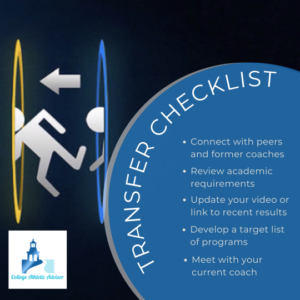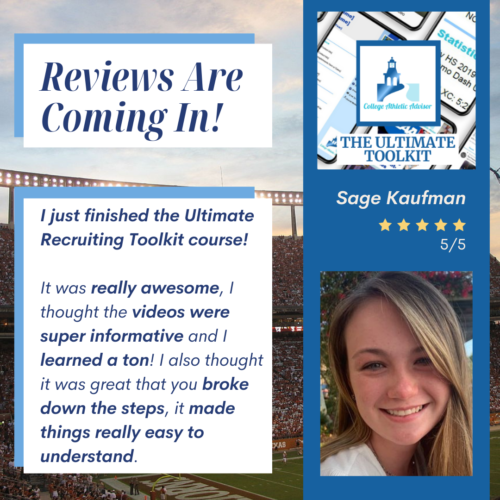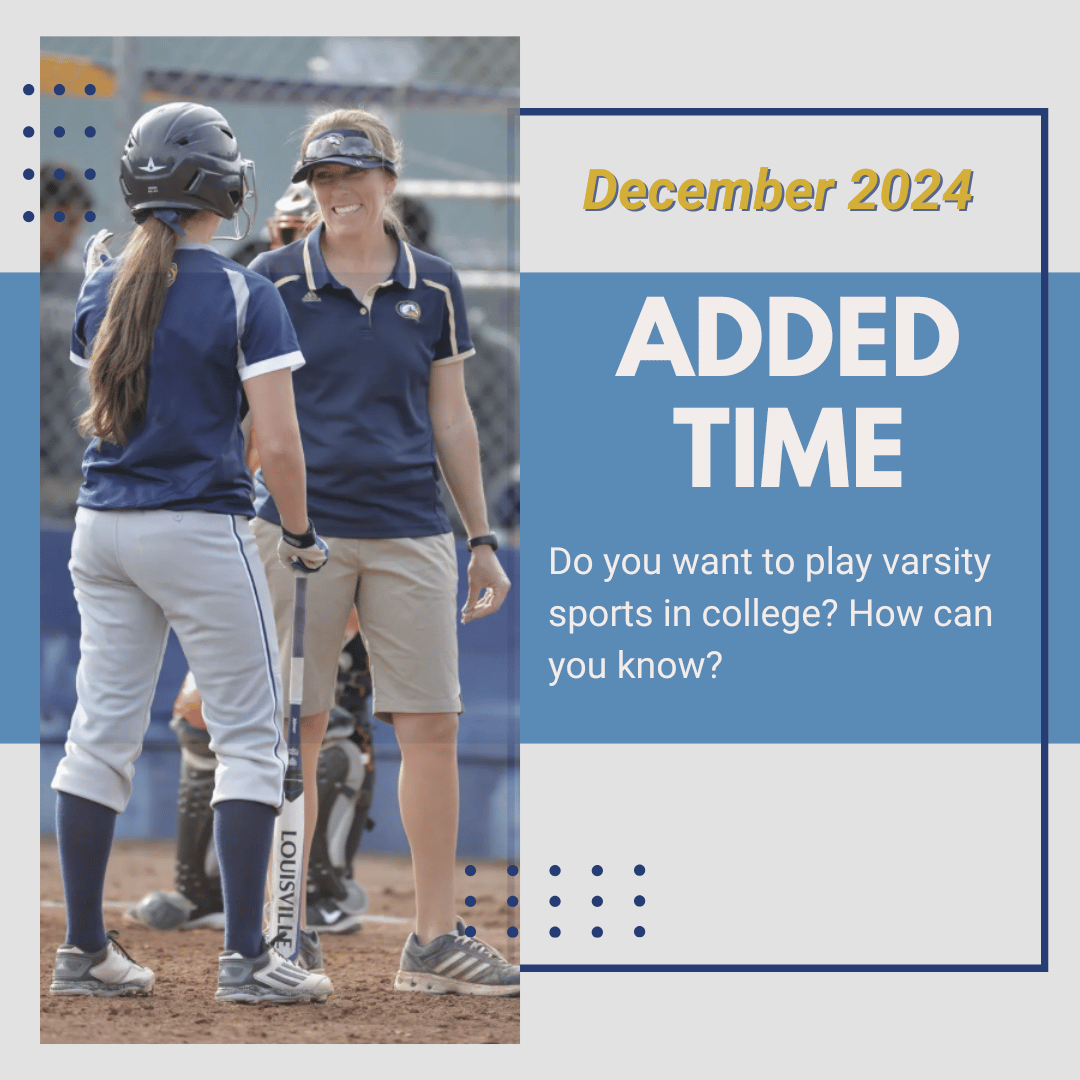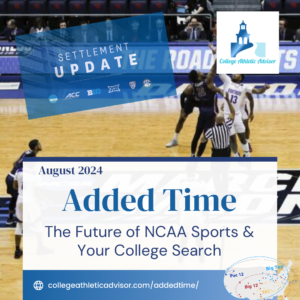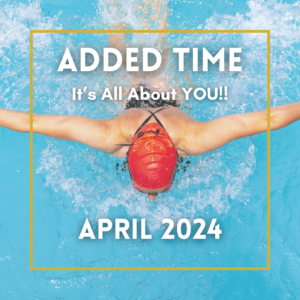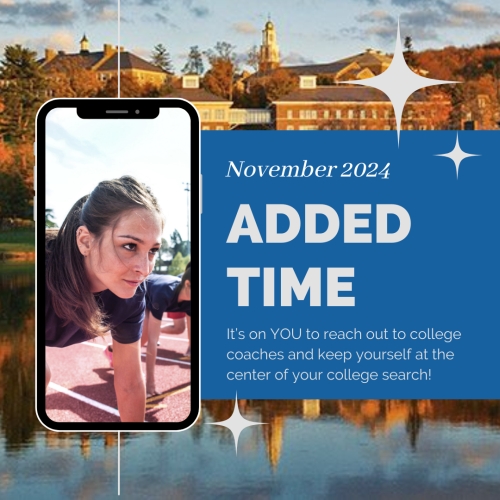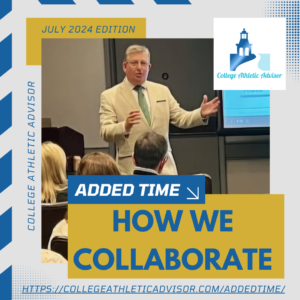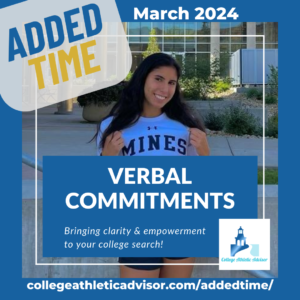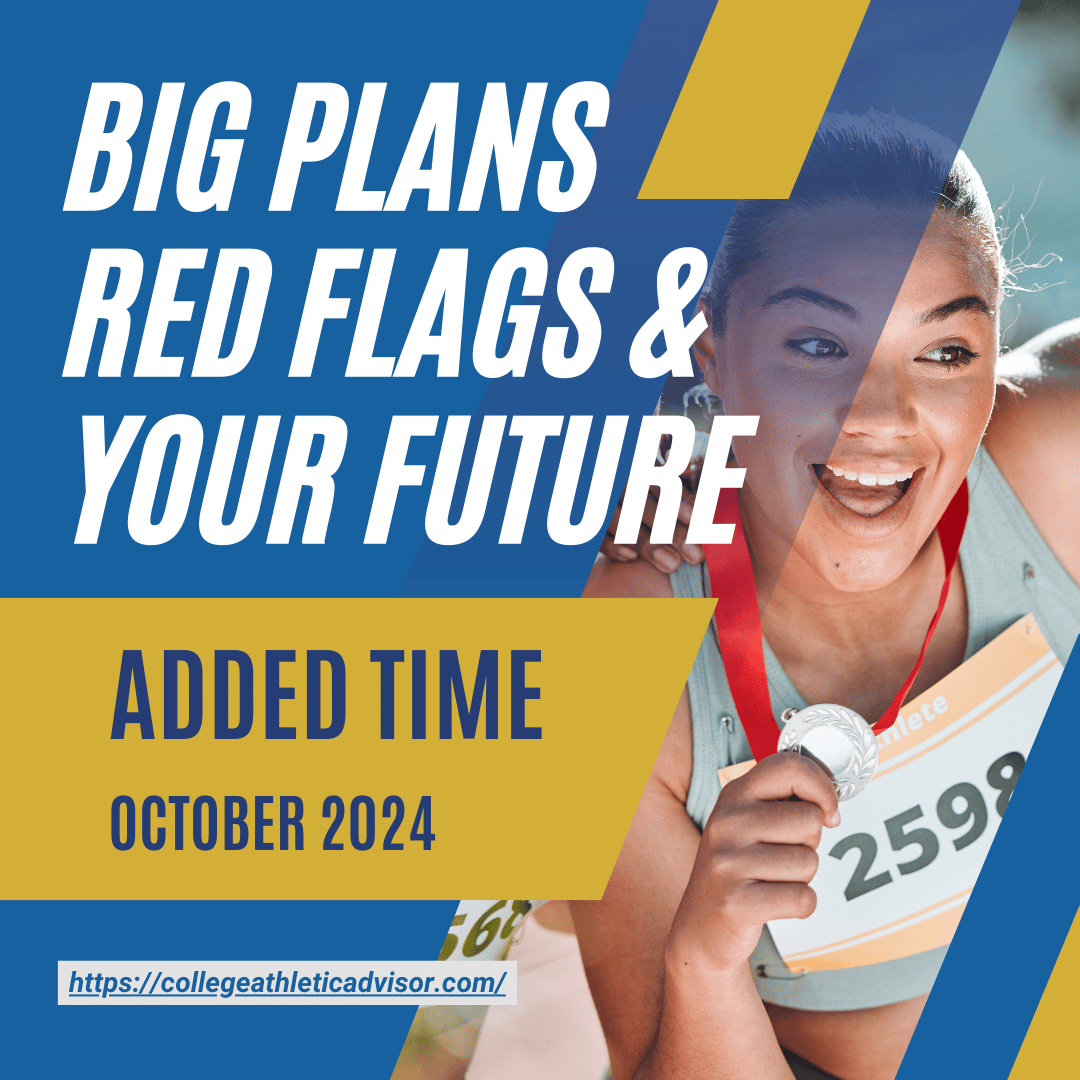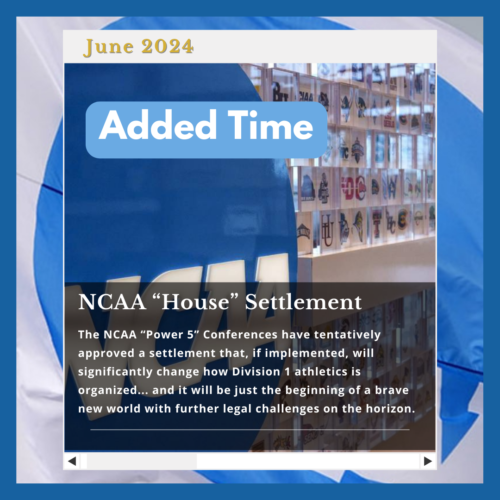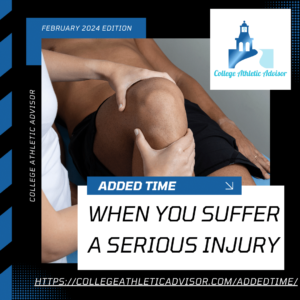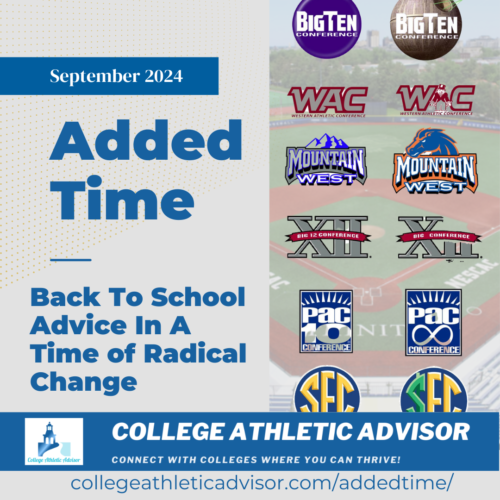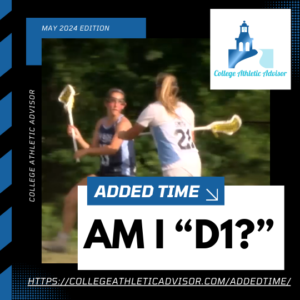Added Time: Our Monthly College Search Newsletter
May Update:
The House v NCAA Settlement is Coming: What Does It Mean For YOU?
Beginning in 2025-26, although NIL is still going to exist and students at all levels of intercollegiate athletics will still have opportunities to monetize their intellectual property; at the most visible level of college sports, NCAA Division 1, the “House Settlement” is changing the game. In this post-NIL world, the most visible NCAA programs are transitioning to paying athletes directly. The other big adjustment from a student perspective is going to be roster limits. The transition from scholarship limits to roster limits generally makes sense, but the implementation has been rushed and problematic. The roster limits in some sports (track particularly) created situations where there were significant roster cuts and even some scholarship signees were impacted. Figuring out how to implement these cuts without penalizing students is the final hold up to the court approving the settlement. Things have progressed far enough, and disinformation is so widespread that my last look at a "Post-NIL" world needed this update...
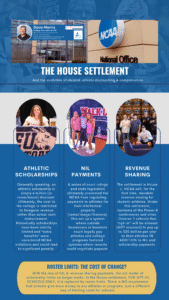 Obviously, direct payments totaling $20.5 million per school to athletes takes up a lot of media interest, as does the controversy about roster cuts. The changes among Power 4 schools and other D1 schools that “opt-in” are significant, BUT outside of Power 4 football, basketball and a few outlier programs in other sports at these schools, recruiting remains unchanged. Coaches are charged with assembling their rosters in addition to all other duties and with little or no training. So, among the 2,000+ colleges outside the Power 4/Football Bowl Subdivision the median NIL deal is in the low 2 figures and athletic scholarships are discounts that have the same value as merit scholarships or any other form of institutional aid. The bifurcation of college sports has become more dramatic and looks to be increasing, even as the difference in talent between divisions for most sports remains very small.
Obviously, direct payments totaling $20.5 million per school to athletes takes up a lot of media interest, as does the controversy about roster cuts. The changes among Power 4 schools and other D1 schools that “opt-in” are significant, BUT outside of Power 4 football, basketball and a few outlier programs in other sports at these schools, recruiting remains unchanged. Coaches are charged with assembling their rosters in addition to all other duties and with little or no training. So, among the 2,000+ colleges outside the Power 4/Football Bowl Subdivision the median NIL deal is in the low 2 figures and athletic scholarships are discounts that have the same value as merit scholarships or any other form of institutional aid. The bifurcation of college sports has become more dramatic and looks to be increasing, even as the difference in talent between divisions for most sports remains very small.
The following are significant trends related to intercollegiate athletics:
- For Power 4 and other “opt-in” conferences/institutions, roster caps rather than scholarship limits will be the new reality. BUT this is VERY unlikely to impact rosters at other schools. The students impacted by these limits are overwhelmingly at their current schools as walk-ons and are not going to transfer to D2/D3/NAIA schools they were unwilling to attend out of high school.
- Title IX is now a dead letter. To the extent women’s sport continues to thrive, it is based on the commitment of participants and institutions. There is no possibility of enforced compliance at this point and direct payouts are being made specifically without regard to gender equity. It is worth pointing out that discrimination against women in college admissions was endemic prior to the adoption of Title IX.
- NCAA Division 1 is splitting into “opt-in” and “opt-out” conferences/programs on top of the FBS/FCS divide. It remains to be seen whether these institutions can find common ground to stick together or if the Power 4 conference schools will want to formally break the division, or even the NCAA apart.
- The NCAA will NOT be enforcing compliance with NIL and House settlement rules. The Power 4 Conferences have created a “College Sports Commission” to enforce these rules. It probably would be cheaper to pay the attorneys about to get rich suing the NCAA directly rather than waiting for the inevitable lawsuits.
- Congress is considering various proposals and may act. What that might look like is difficult to predict. Given the current patchwork of state laws around NIL, and the aggressive moves by state legislatures, federal regulation seems inevitable, but the timeline is, at best, unclear.
- For the VAST majority of prospective student-athletes, the rules are NOT changing in a significant way. You won’t see that on ESPN, but it is wise to remember. This includes roster caps and transfer regulations.
As always, if you are looking for the individualized or institutional consulting help that puts you ahead of your peers, check out our services here! You can make an initial appointment through the link on our homepage! School administrators and counselors access our free resources, appointments and programs for school collaboration here.
For more information, contact Dave Morris, College Counselor & CEO, College Athletic Advisor, dave@collegeathleticadvisor.com or phone: (719) 248-7994
©2025 All Rights Reserved https://collegeathleticadvisor.com/addedtime/
Can we talk?
Of course!! Schedule an initial consult, email; or call (719) 248-7994 and let's discuss how we can collaborate!
The Ultimate Toolkit
online course guides you to create the keys to a successful college search!
You'll get
- an academic/athletic resume
- impactful highlight video & a video channel that allows coaches to evaluate you in depth
- an introductory email that gets opened and gives you the opportunity to connect with college coaches

